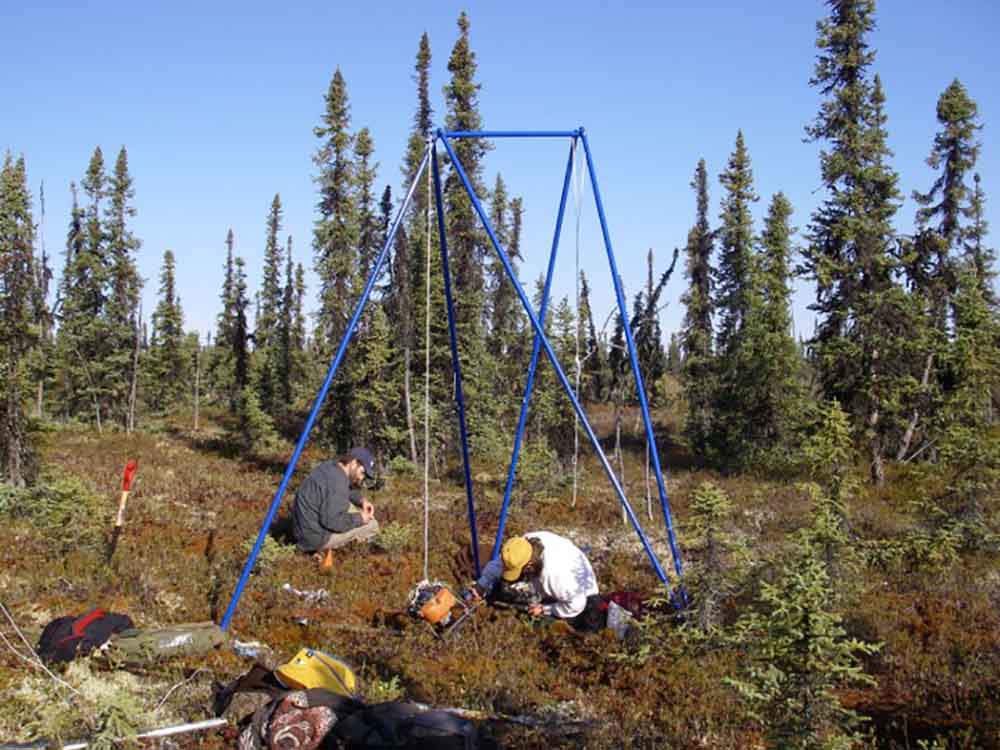News Release

Misha Kanevskiy, University of Alaska Fairbanks
News Release Date: January 22, 2021
Contact: Jonathan A. O'Donnell
Peatlands are a type of wetland where dead plant material accumulates due to soggy conditions and slow rates of decomposition. Peatlands store large amounts of carbon, which helps moderate the Earth’s climate. While they only comprise 3% of the global land area, peatlands contain nearly 25% of the global soil carbon. For thousands of years, peatlands have provided this ecosystem service, but climate change and human land use may cause peatlands to change from a carbon sink to a carbon source to the atmosphere. Still, much uncertainty remains around the relationship between peatlands, the global carbon cycle, and feedbacks to the climate. For instance, Earth system models that seek to understand relationships between land, ocean, and the atmosphere do not currently account for the role of peatlands.
In a new study in Nature Climate Change, researchers conducted an expert assessment study by surveying 44 leading experts (including National Park Service scientist Jon O’Donnell) to evaluate historic, present-day, and future changes to peatland carbon dynamics across the globe. At high latitudes, such as in Alaska, peatlands are vulnerable to warming temperatures, permafrost thaw, and wildfire. Each of these processes have the potential to mobilize carbon, releasing it from peatlands to the atmosphere, where it can warm the climate. The expert assessment findings suggest that tropical peatlands may release more carbon than those at high-latitudes, primarily due to direct human impacts. Still, the researchers estimate that 100 billion tons of carbon could be released from Earth’s peatlands to the atmosphere by the year 2100. Therefore, preserving peatlands is an important goal for limiting climate change.
For more information, see:
Loisel, J., Gallego-Sala, A.V., Amesbury, M.J. et al. 2021. Expert assessment of future vulnerability of the global peatland carbon sink. Nature Climate Change 11: 70-77. https://doi.org/10.1038/s41558-020-00944-0
Expert assessment of future vulnerability of the global peatland carbon sink
Abstract
The carbon balance of peatlands is predicted to shift from a sink to a source this century. However, peatland ecosystems are still omitted from the main Earth system models that are used for future climate change projections, and they are not considered in integrated assessment models that are used in impact and mitigation studies. By using evidence synthesized from the literature and an expert elicitation, we define and quantify the leading drivers of change that have impacted peatland carbon stocks during the Holocene and predict their effect during this century and in the far future. We also identify uncertainties and knowledge gaps in the scientific community and provide insight towards better integration of peatlands into modelling frameworks. Given the importance of the contribution by peatlands to the global carbon cycle, this study shows that peatland science is a critical research area and that we still have a long way to go to fully understand the peatland–carbon–climate nexus.
Also see:
Peatlands keep a lot of carbon out of Earth’s atmosphere, but that could end with warming and development, The Conversation, December 7, 2020
Hydro-Ecology of Arctic Thawing (HEAT), U.S. Geological Survey, Alaska Science Center
Climate, Permafrost Lost, Oak Ridge National Laboratory, February 15, 2021
Permafrost monitoring in Arctic Alaska parks
High-latitude climate change
Jonathan A. O’Donnell
Last updated: February 16, 2021
